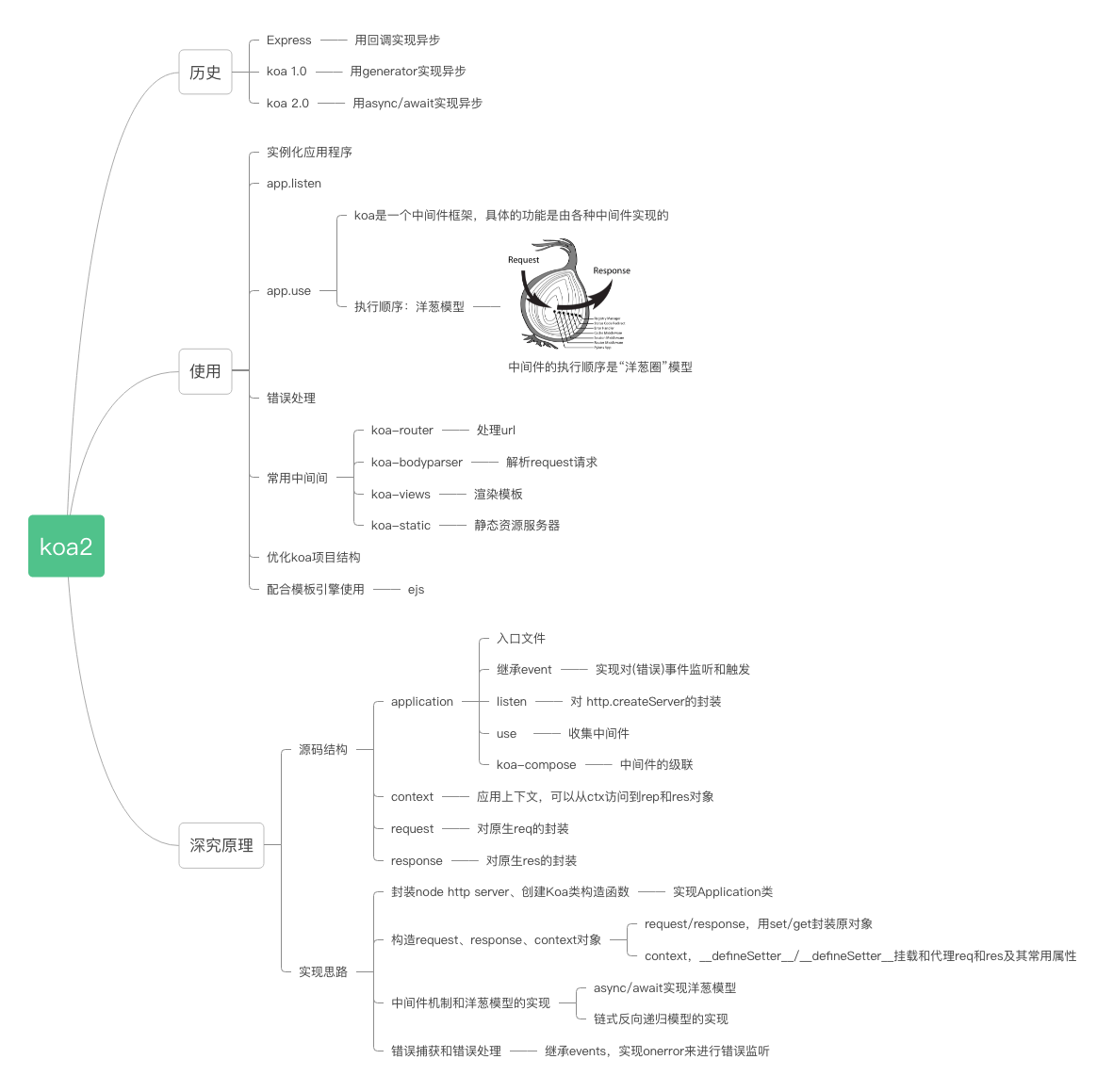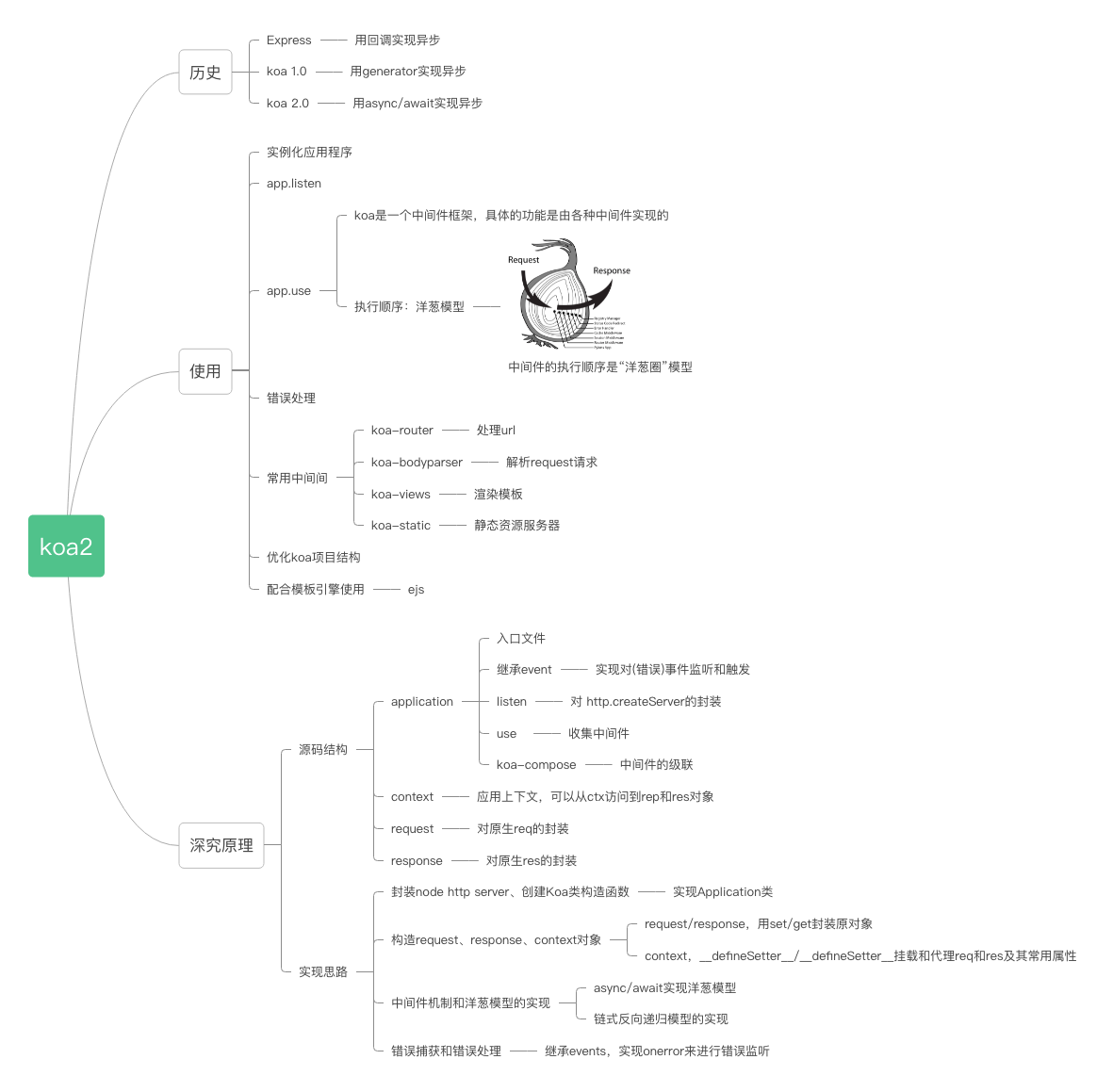Koa入门(二)搭建 Koa 程序
原创
1 项目搭建
1.1 初始化目录
安装 mkdir koa-demo && cd koa-demo && npm init -y && npm i koa --save && code .
在 package.json 文件中配置:
"scripts": {
"test": "echo \"Error: no test specified\" && exit 1",
"start": "node index.js"
}1.2 根目录新建 index.js 文件
const Koa = require('koa')
const app = new Koa()
// 中间件
app.use((ctx) => {
// ctx.body 相当于 http.createServer((req, res) => { res.end('你好,测不准') })
ctx.body = '你好,测不准'
})
app.listen(3000, () => {
console.log('监听3000端口')
})
ctx.body就是返回给前端的数据,之前的开发是MVC模式,后端直接渲染完,返回给前端,你可以这么写ctx.body = '<h1>你好,测不准</h1>',这样页面就可以直接渲染标签;但是现在的项目都是前后端分离的,后端直接返回JSON数据,前端拿到之后渲染,所以Koa返回的数据是这样的ctx.body = [{name: 'uncertainty'}, {name: '测不准'}],希望我的表达让您理解。
执行 npm start
打开浏览器,输入 http://localhost:3000/

当然大家现在可以使用浏览器查看,因为是 get 请求,但是推荐大家安装 postman,后期可以方便测试 post 请求或者上传文件功能。postman下载地址。
1.3 使用 postman 请求 http://localhost:3000/

但是这里每次改动代码都需要重新启动服务,不是很方便,这里我们安装 nodemon 辅助工具,更改之后会自动刷新,全局或者当前项目下安装都可以,我这里全局安装下 npm i nodemon -g。
修改启动命令为 "start": "nodemon index.js" (nodemon 会帮我们监听 js, mjs, json 文件的变化,自动启动程序)

2 实现简单 Koa
大家都知道,Koa 是对 node 的封装,先来个简单的服务实现:
- 新建文件
application.js使用Koa时是new的实例,所以需要实现个类,listen方法监听端口,use方法实现挂载中间件,如下:let http = require('http') class Application{ constructor() { this.callbackFunc } // 开启http srever 传入callback listen(...args) { let server = http.createServer(this.callback()) server.listen(...args) } /** * 挂载回调函数 * @param {*} fn 回调处理函数 */ use(fn) { this.callbackFunc = fn } /** * 获取http server所需的callback函数 */ callback() { return (req, res) => { this.callbackFunc(req, res) } } } module.exports = Application - 新建
example.js文件 把刚创建的application.js文件引入let simpleKoa = require('./application') let app = new simpleKoa() app.use((req, res) => { res.writeHead(200) res.end('hello, uncertainty') }) // 这次监听 8000 app.listen(8000, () => console.log('监听8000端口')) - 执行命令
nodemon example.js


3 中间件
Koa 是一个中间件框架,本身没有捆绑任何中间件(核心代码简洁)。本身支持的功能并不多,功能都可以通过中间件拓展实现。通过添加不同的中间件,实现不同的需求,从而构建一个 Koa 应用。Koa 的中间件就是函数,现在基本都是 async 函数。
- app.use() 是用于注册中间件并且必须是生成器函数(源码中有判断,后面大版本会移除,2.0 为了向下兼容)use(fn) { if (typeof fn !== 'function') throw new TypeError('middleware must be a function!'); if (isGeneratorFunction(fn)) { deprecate('Support for generators will be removed in v3. ' + 'See the documentation for examples of how to convert old middleware ' + 'https://github.com/koajs/koa/blob/master/docs/migration.md'); fn = convert(fn); } debug('use %s', fn._name || fn.name || '-'); this.middleware.push(fn); return this; }
生成器函数:
generator是ES6新增的一个特殊函数,通过function*声明,函数体内通过yield来指明函数的暂停点,该函数返回一个迭代器,并且函数执行到yield语句前面暂停,之后通过调用返回的迭代器next()方法来执行yield语句
我们也可以使用生成器函数做中间件(不推荐):
const Koa = require('koa')
const app = new Koa()
app.use(function *(next){
console.log(1)
yield next;
console.log(3)
this.body = '你好,测不准啊'
})
app.use(function *(next){
console.log(2)
yield next
})
app.listen(3000, () => {
console.log('监听3000端口')
})
Koa的中间件通过一种更加传统的方式进行级联,摒弃了以往 node 频繁的回调函数造成的复杂代码逻辑Koa会把很多中间键函数组成一个处理链,每个中间键函数都可以做一些自己的事情,然后用next()来调用下一个中间键函数- 中间键必须是一个函数,可为异步函数:通过es7中的async和await来处理
use内部封装了两个对象:ctx,next
ctx是context的一般叫成上下文,主要包括request和response。body是http协议中的响应体,header是指响应头,如果要抛异常可以直接使用ctx.throw(500, '接口异常'),ctx.status设置状态码,ctx.url获取请求URL等。next起到串联中间件的作用,通过调用next函数,把执行权交给下一个中间件。最后一个中间件不使用该函数。
4 编写自己的中间件
4.1 log 中间件
日志模块也是线上不可缺少的一部分,完善的日志系统可以帮助我们迅速地排查出线上的问题。通过 Koa 中间件,我们可以实现属于自己的日志模块(当然可以直接用社区现成的库):
- 新建
logger.jsconst fs = require('fs') module.exports = (options) => async (ctx, next) => { const startTime = Date.now() const requestTime = new Date() await next() const ms = Date.now() - startTime let logout = `${ctx.request.ip} -- ${requestTime} -- ${ctx.method} -- ${ctx.url} -- ${ms}ms` // 输出日志文件 fs.appendFileSync('./log.txt', logout + '\n') }const Koa = require('Koa') const app = new Koa() const logger = require('./logger') app.use(logger()) app.listen(3000, () => { console.log(`Server port is 3000.`) }) - 入口文件引入
logger.js文件

4.2 token 验证
前后端分离开发,我们常采用 JWT 来进行身份验证,其中 token 一般放在 HTTP 请求中的 Header Authorization 字段中(后面会介绍),每次请求后端都要进行校验,不可能每个接口都写判断,Koa 通过编写中间件来实现 token 验证。
- 创建
token.jsmodule.exports = (options) => async (ctx, next) { try { // 获取 token const token = ctx.header.authorization if (token) { try { // verify 函数验证 token,并获取用户相关信息 await verify(token) } catch (err) { console.log(err) } } // 进入下一个中间件 await next() } catch (err) { console.log(err) } }const Koa = require('Koa') const app = new Koa() const token = require('./token') app.use(token()) app.listen(3000, () => { console.log(`Server port is 3000.`) })喜欢的朋友可以关注下公众号:与前端沾边,2021 年一起学习进步。 - 入口文件引入
token.js文件
原创声明:本文系作者授权腾讯云开发者社区发表,未经许可,不得转载。
如有侵权,请联系 cloudcommunity@tencent.com 删除。
原创声明:本文系作者授权腾讯云开发者社区发表,未经许可,不得转载。
如有侵权,请联系 cloudcommunity@tencent.com 删除。
- 1 项目搭建
- 1.1 初始化目录
- 1.2 根目录新建 index.js 文件
- 1.3 使用 postman 请求 http://localhost:3000/
- 2 实现简单 Koa
- 3 中间件
- 4 编写自己的中间件
- 4.1 log 中间件
- 4.2 token 验证

腾讯云开发者

扫码关注腾讯云开发者
领取腾讯云代金券
Copyright © 2013 - 2025 Tencent Cloud. All Rights Reserved. 腾讯云 版权所有
深圳市腾讯计算机系统有限公司 ICP备案/许可证号:粤B2-20090059 深公网安备号 44030502008569
腾讯云计算(北京)有限责任公司 京ICP证150476号 | 京ICP备11018762号 | 京公网安备号11010802020287
Copyright © 2013 - 2025 Tencent Cloud.
All Rights Reserved. 腾讯云 版权所有












